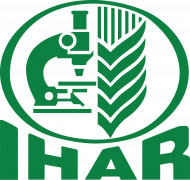Due to a lack of essential nutrient management recommendations, small-scale potato seed producers and cooperatives struggle to maintain higher standard-sized seed tuber yields at an optimum production cost. However, ware potato production nutrient management studies have indicated that adjusting phosphorus (P) and potassium (K) below the ware potato recommended level (RWP) enhances medium-sized tuber yield. Thus, this study aimed to assess the economically optimal application rates of P, K, and P*K required for increased medium-sized tuber yield. The study included four P and K fertilizer rates: ¼ RWP, ½ RWP, RWP, and the control on three medium maturing potato varieties, to assess growth, yield, and tuber quality in a factorial split-plot design. The results revealed no statistically significant interaction effects, p > 0.05, between treatment factors. However, P, K, and variety altered some growth and yield traits of the tested varieties. The application of phosphorus recommended for ware potato production (RWP) markedly improves medium and total seed-sized tuber yield over the control, but was equivalent to the yield achieved by ¼ and ½ RWP. In contrast, K treatments had no considerable advantage in enhancing seed tuber yield, except for medium-sized tuber yield. Therefore, a quarter of the P fertilizer required for ware potato production seems enough to produce the optimum seed tuber yield under good production conditions. Hence, adjusting P below the standard ware potato recommendation and eliminating KCl management is advisable to maximize seed tuber yield and economic benefit of medium maturing potato production in the experimental areas and other regions with similar growing conditions.
Full publication URL















